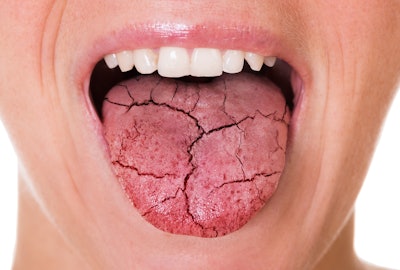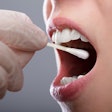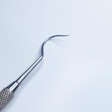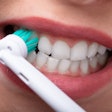
Women typically have significantly lower salivary flow than men, which increases their predisposition to certain oral diseases and negatively impacts their quality of life, according to researchers from the University of Connecticut (UConn) School of Dental Medicine. Further, the differences, largely ignored until now, should be accounted for when treating women patients both to ensure they don't reach critically low levels and for treating men and women for oral health diseases.
Dr. Rajesh Lalla, a professor and associate dean for research at the UConn School of Dental Medicine, noted the differences in salivary flow in men and women who were being treated for head and neck cancer. Xerostomia is a common side effect of radiation.
The study, funded by the National Institute of Dental and Craniofacial Research, comprised 572 patients across six sites. Lalla and colleagues were surprised to discover that women participants had markedly lower stimulated salivary flow than men both before and after radiation treatment. The same standard of values is applied to both men and women when interpreting saliva flow test results. Low salivary flow increases one's risk of certain oral health conditions, including dental caries, periodontitis, tooth loss, and oral thrush.
Lalla, intrigued by the findings, investigated past research and indeed found prior studies reporting lower salivary flow in women in other populations and age groups, supporting that women have a lower salivary flow than men, which isn't limited exclusively to patients with head and neck cancer.
Although this finding has not exactly been buried deep in the research, the time has come to recognize the differences and treat patients who may suffer poor quality of life from the adverse effects of xerostomia. According to Lalla in a university news article, the differences in salivary flow between men and women have not been well appreciated. Although the exact reason for the difference isn't well known, it's hypothesized that it could be related to the size of salivary glands in men and women.
As research is conducted to concretely account for the differences in salivary flow, clinicians should, first, be aware of reduced salivary flow in women and be cognizant of women's predisposition to caries, tooth loss, and other oral diseases when salivary flow reaches critically low levels. Second, the differences should be accounted for when treating women for certain oral health conditions.
" … females and males have significantly different ranges of normal salivary flow. This should be taken into account when testing salivary flow in clinical practice and research. These findings also suggest that because females as a group have lower normal salivary flow, they may be at higher risk of reaching critically low levels, in situations where normal saliva production is reduced," Lalla said.



















